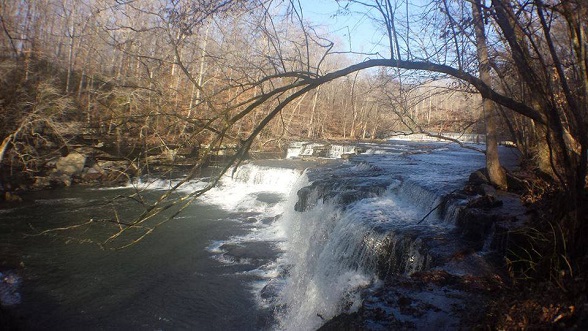
OLD STONE FORT STATE ARCHAEOLOGICAL PARK
SEAC Nashville 2015 Excursion Background Information
 | OLD STONE FORT STATE ARCHAEOLOGICAL PARK SEAC Nashville 2015 Excursion Background Information |

Old Stone Fort State Archaeological Park includes over 800 acres in the community of Manchester, Tennessee. Owned and managed by the Tennessee Division of State Parks, the core of the park is comprised of a series of earthworks enclosing about 50 acres on a plateau above the convergence of the Big Duck and Little Duck Rivers. The hilltop enclosure dates to the Middle Woodland period, with radiocarbon dates ranging from the first to the fifth centuries A.D. The site has been described as perhaps the most spectacularly sited sacred area of its period in the United States and the largest and most complex hilltop enclosure in the south.
The spectacular setting occurs where two rivers drop off the plateau of the Highland Rim in Middle Tennessee and plunge to the level of the Central Basin of Tennessee. As the forks of the Duck River cut down from the plateau level they isolate a promontory between them before they join.


Join tour guide Bill Lawrence (Archaeologist, Tennessee Division of Archaeology) for an examination of the museum, gift shop, and an easy 1.3 mile walk along the "Enclosure Trail" which parallels the nearly 4600 feet of discontinuous earthworks.

Early explorers and antiquarians, biased by perceptions of native peoples as too "primitive" to construct such an enormous structure, attributed the builders variously to the Vikings, Welsh, and even Hernando de Soto -- hence the traditional name of "Old Stone Fort." While some early archaeological explorations revealed something of the construction techniques involved in the earthworks, the relative scarcity of artifacts left the Old Stone Fort an archaeological mystery until research conducted by Charles Faulkner (University of Tennessee) in the 1960s.



More recent investigations have examined the possible solar alignments at the site...

And most recently, geoarchaeological survey of substantial portions of the site.
Links to background information on the site and environs (links open in a new tab)